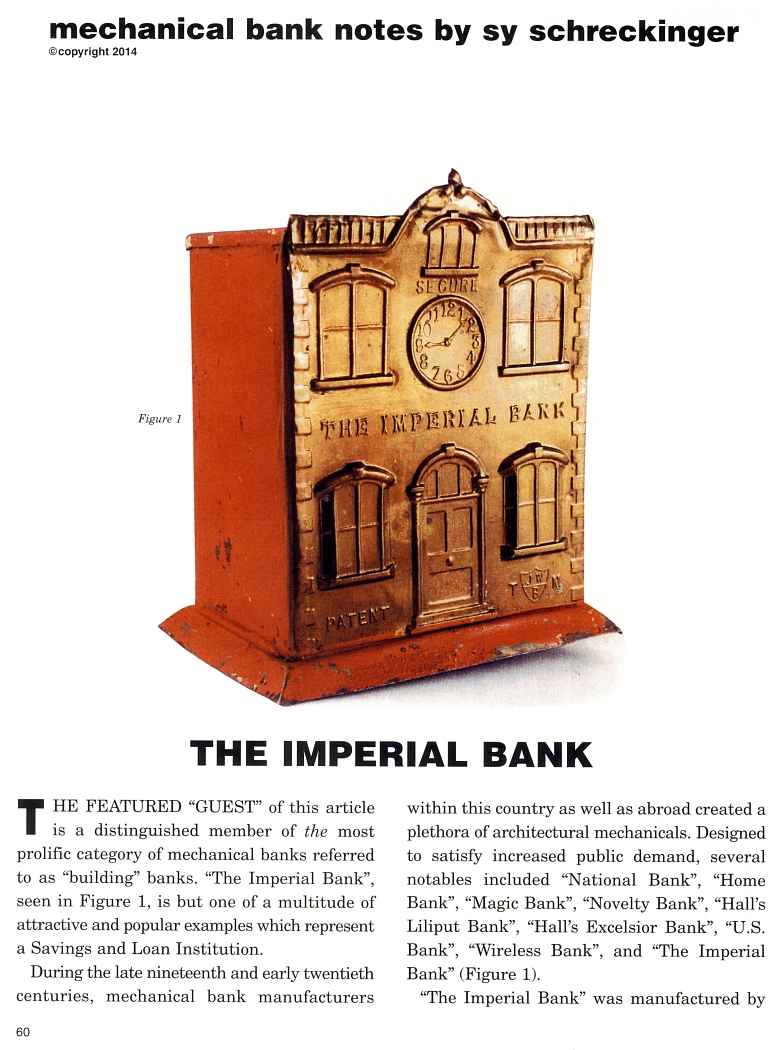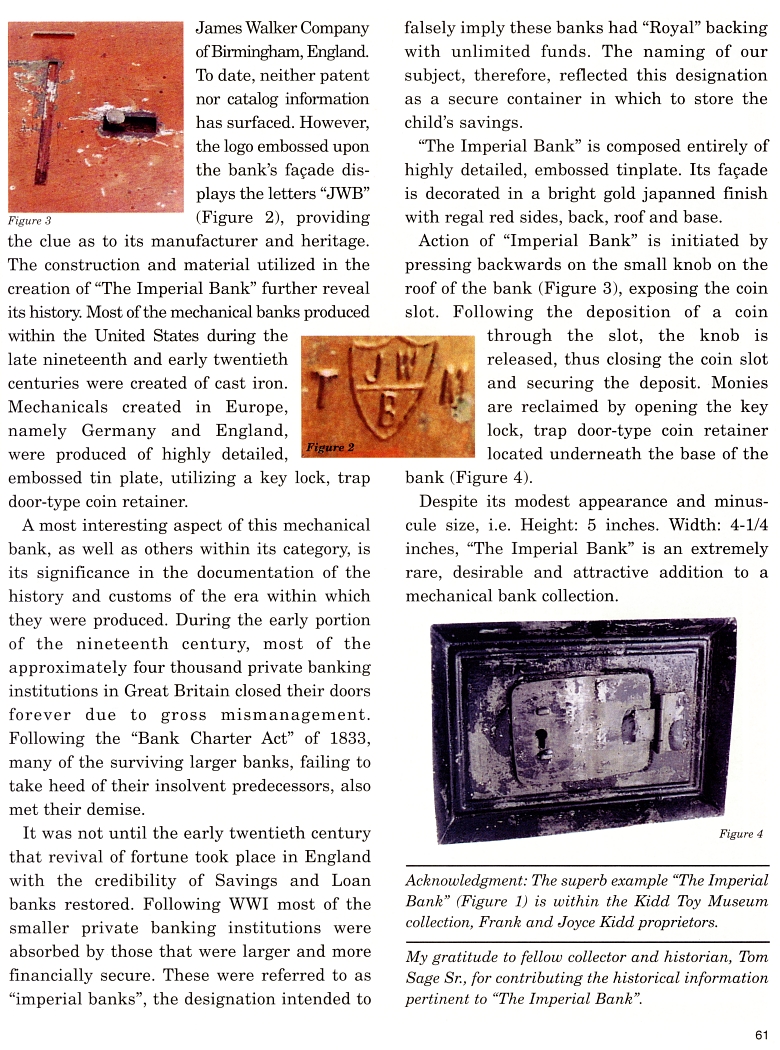|
The Imperial Bank
by Sy Schreckinger – ANTIQUE TOY WORLD Magazine – November, 2014
THE FEATURED "GUEST" of this article is a distinguished member of the
most prolific category of mechanical banks referred to as "building"
banks. "The Imperial Bank", seen in Figure 1, is but one of a multitude
of attractive and popular examples which represent a Savings and Loan
Institution.
During the late nineteenth and early twentieth centuries,
mechanical bank manufacturers within this country as well as abroad
created a plethora of architectural mechanicals. Designed to satisfy
increased public demand, several notables included "National Bank",
"Home Bank", "Magic Bank", "Novelty Bank", "Hall's Liliput Bank",
"Hall's Excelsior Bank", "U.S. Bank", "Wireless Bank", and "The Imperial
Bank" (Figure 1).
"The Imperial Bank" was manufactured by James Walker Company of
Birmingham, England. To date, neither patent nor catalog information has
surfaced. However, the logo embossed upon the bank's facade displays the
letters "JWB" Figure a (Figure 2), providing the clue as to its
manufacturer and heritage. The construction and material utilized in the
creation of "The Imperial Bank" further reveal its history. Most of the
mechanical banks produced within the United States during the late
nineteenth and early twentieth centuries were created of cast iron.
Mechanicals created in Europe, namely Germany and England, were produced
of highly detailed, embossed tin plate, utilizing a key lock, trap
door-type coin retainer.
A most interesting aspect of this mechanical bank, as well as
others within its category, is its significance in the documentation of
the history and customs of the era within which they were produced.
During the early portion of the nineteenth century, most of the
approximately four thousand private banking institutions in Great
Britain closed their doors forever due to gross mismanagement. Following
the "Bank Charter Act" of 1833, many of the surviving larger banks,
failing to take heed of their insolvent predecessors, also met their
demise.
It was not until the early twentieth century that revival of
fortune took place in England with the credibility of Savings and Loan
banks restored. Following WWI most of the smaller private banking
institutions were absorbed by those that were larger and more
financially secure. These were referred to as "imperial banks", the
designation intended to falsely imply these banks had "Royal" backing
with unlimited funds. The naming of our subject, therefore, reflected
this designation as a secure container in which to store the child's
savings.
"The Imperial Bank" is composed entirely of highly detailed,
embossed tinplate. Its facade is decorated in a bright gold japanned
finish with regal red sides, back, roof and base.
Action of "Imperial Bank" is initiated by pressing backwards on the
small knob on the roof of the bank (Figure 3), exposing the coin slot.
Following the deposition of a coin through the slot, the knob is
released, thus closing the coin slot and securing the deposit. Monies
are reclaimed by opening the key lock, trap door-type coin retainer
located underneath the base of the bank (Figure 4).
Despite its modest appearance and minuscule size, i.e. Height: 5 inches.
Width: 4-1/4 inches, "The Imperial Bank" is an extremely rare, desirable
and attractive addition to a mechanical bank collection.
Acknowledgment: The superb example "The Imperial Bank" (Figure 1)
is within. the Kidd Toy Museum. collection, Frank and Joyce Kidd
proprietors.
My gratitude to fellow collector and historian, Tom Sage Sr., for
contributing the historical information pertinent to "The Imperial
Bank". |


